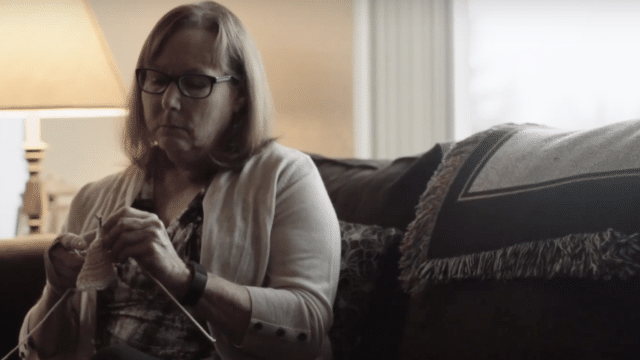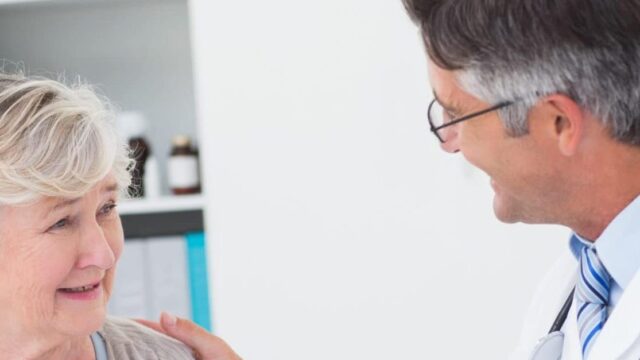Managing Breast Cancer Wounds: Strategies for Optimal Healing and Recovery

In October and all year long, Healogics is proud to support Breast Cancer Awareness Month, and all affected by it. Breast cancer treatment-related wounds can occur following radiation therapy, surgery, or other treatments. These wounds range from surgical site complications to delayed radiation effects, impacting patients’ recovery and daily comfort. Proper wound management is essential for recovering and returning to daily activities after breast cancer treatment.
Key wound challenges individuals undergoing breast cancer treatment include:
- Post-surgical healing complications
- Radiation-induced skin damage
- Tissue changes months or years after treatment
- Infection risks during healing
- Impact on daily activities and comfort
This guide provides evidence-based strategies for managing breast cancer wounds, helping patients and caregivers understand:
- Types of treatment-related wounds
- Warning signs of complications
- Proper wound care techniques
- When to seek professional help
- Latest treatment options
Understanding Different Types of Breast Cancer Wounds
People undergoing breast cancer treatment may experience different types of wounds:
Surgical Sites
- Clean incisions typically begin healing within 2-3 weeks
- Watch for redness, swelling, or unusual drainage
- May affect range of motion during initial healing
Radiation-Related Skin Changes
- Can appear during treatment or months later
- Range from mild redness to tissue breakdown
- Risk factors include skin type, radiation dose, and treatment location
Drainage Points
- Common after mastectomy or lymph node procedures
- Usually heal within 3-4 weeks after drain removal
- Require specific care to prevent infection
Essential Components of Breast Cancer Wound Care
Proper wound care following breast cancer treatment benefits from attention to three key areas:
Cleaning and Hygiene
- Wash hands thoroughly before touching the wound area
- Clean the wound with a prescribed solution or sterile saline
- Pat dry gently with clean gauze
- Never use soap directly on wounds
Dressing Management
- Change dressings as directed by your healthcare team
- Use recommended dressing types for wound stage
- Ensure dressings stay dry between changes
- Monitor drainage amount and color
Infection Prevention
- Check daily for increased redness or warmth
- Note any fever or unusual discharge
- Keep area protected during bathing
- Report concerning changes promptly
Managing Pain and Discomfort During Wound Healing
Pain Management Options
- Take prescribed pain medication 30-60 minutes before dressing changes
- Use cold packs for 15-20 minutes to reduce discomfort
- Practice gentle arm exercises as recommended
- Consider relaxation techniques during procedures
When to Contact Your Care Team
- Pain increases suddenly
- Medication isn’t providing relief
- New shooting or burning sensations
- Discomfort prevents sleep or daily activities
Positioning for Comfort
- Support the affected arm with pillows
- Adjust sleeping position to reduce pressure
- Use recommended posture during daily tasks
Recognizing and Preventing Wound Complications
Understanding potential complications helps you act early and maintain healthy healing. Common complications can include:
Infection Early Warning Signs
- Increased pain or tenderness
- Redness that spreads beyond the wound
- Warm or hot skin around the site
- Fever above 100.4°F
- Cloudy or foul-smelling drainage
- Unexpected swelling
Delayed Healing Warning Signs
- Wound remaining the same size
- Lack of new tissue growth
- Continued drainage beyond the expected timeframe
- Persistent redness
- Wound edges not coming together
Wound Separation (Dehiscence) Signs
- Gaps in surgical sites
- Pulling sensation at wound edges
- New drainage
- Deep tissue becoming visible
- Staples or stitches loosening
Special Considerations During Treatment
- Chemotherapy can slow healing and increase infection risk
- Radiation therapy may affect skin strength
- Some medications may impact healing
- Lymphedema can affect wound sites
Prevention Steps
- Keep all follow-up appointments
- Monitor wound sites daily
- Maintain good nutrition
- Follow wound care instructions carefully
- Protect healing areas during daily activities
- Report concerns promptly to your care team
When to Contact Your Healthcare Provider
Contact your healthcare provider immediately if you notice:
Physical Changes
- Fever over 100.4°F
- Increased warmth around the wound
- Redness spreading beyond wound edges
- New or different pain
- Unexpected bleeding or drainage
Wound Concerns
- Separation of wound edges
- Deep tissue becoming visible
- Foul odor from the wound site
- Change in drainage color or amount
- Hardening or darkening of surrounding skin
Urgent Situations
- Severe pain unrelieved by medication
- Difficulty breathing or chest pain
- Dizziness or confusion
- Drainage soaking through dressings faster than expected
- Signs of allergic reaction to dressings
Call your provider during office hours for:
- Questions about dressing changes
- Concerns about healing progress
- Need for additional supplies
- Routine follow-up scheduling
- Non-urgent medication questions
Taking the Next Steps in Your Healing Journey
You can trust us to help you heal. Our wound care specialists are ready to see you at one of our 600+ Wound Care Centers nationwide. If you or someone you care for has a wound that is not healing, find a Center near you today. Don’t let a breast cancer wound impact your quality of life – seek specialized care at a Healogics Wound Care Center® and take the first step towards healing.
At Healogics, we understand that breast cancer wounds can be a sensitive and emotional topic for survivors. Our compassionate team is dedicated to providing the highest quality care in a supportive and understanding environment. We work closely with patients and their healthcare providers to develop personalized treatment plans that address each individual’s specific needs.
If you have recently been diagnosed with breast cancer and are concerned about the potential for early breast cancer wounds, it’s essential to discuss this with your oncology team. They can provide guidance on what to expect and how to monitor for potential wound development. Early detection and intervention can promote optimal healing and prevent complications.
For those who have already developed a breast cancer wound, whether it’s an early or late-stage wound, seeking specialized care at a Wound Care Center can make a significant difference in the healing process. Our advanced therapies, such as hyperbaric oxygen therapy (HBO), can help promote healthy tissue growth and improve the chances of successful wound closure.
Remember, you are not alone on your journey. Healogics is here to support you every step of the way, providing the expertise and care you need to heal your breast cancer wound and improve your quality of life. Contact a Healogics Wound Care Center® near you today to learn more about our services and how we can help you on your path to healing.



